-
Main Issues
-
Mexico before the COP16/CMP6
-
Impact for Mexico
-
Logistics
-
Participation in COP16/CMP6
-
COP16/CMP6 Parties Negotiations
Climate Change
-
What is climate change and what are its effects?
Climate change, which everybody is talking about today, is of anthropogenic nature, that is, it has been caused by greenhouse gases derived from the human activities since the industrial revolution.
Before the industrial revolution, the Earth’s atmosphere composition was 78% nitrogen (N2), 21% oxygen (O2), 0.9% Argon (Ar), trace gases and only 0.03% carbon dioxide (CO2). CO2 is the most important greenhouse gas (GHG), after water vapor. The greenhouse effect in the Earth’s atmosphere occurs as it is very sensitive to high CO2 concentrations.
The great concern for the foreseeable negative effects of global warming on human and natural systems is based on the fact that CO2 concentrations on the Earth’s atmosphere determine the average surface temperature of our planet, which practically follows the concentrations in parallel.
During the last 250 years, human activities have poured into the atmosphere more than 1.1 billion tons of CO2 from the use of fossil fuels for energy generation and consumption, 770 million of which were emitted during the last 50 years. Due to deforestation, during the last 50 years more than 330 tons have been poured, that is one third of the accrued total for the period.
For hundreds of thousands of years, CO2 concentrations in the atmosphere never exceeded 280 parts per million, that is, for every million molecules in the atmosphere that our ancestors breathed until before 1750, they never inspired more than 280 molecules of CO2 (equal to 0.03%). But after the industrial revolution, human activities have poured hundreds of millions of metric tons of CO2 and other greenhouse gases, thus increasing their atmosphere concentration to 390ppm, or 0.04%. -
What are the changes that the world will undergo if we do nothing?
Warming of the climate system is unequivocal, as is now evident from observations of increases in global average air and ocean temperatures, widespread melting of snow and ice and rising global average sea level. Global atmospheric concentrations of CO2, methane (CH4) and nitrous acid (N2O) have increased markedly as a result of human activities since 1750 and now far exceed pre-industrial values determined from ice cores spanning many thousands of years (IPCC AR4 SPM).
The most recent scientific forecasts reveal that during the course of this century, the Earth’s average temperature could increase 3 Celsius degrees, which would cause a sea level rise of about one meter (IPCC AR4 SPM). This would have negative impacts in the coast areas and make them more vulnerable to cyclones. Agricultural activity could also be affected as soil erodes and water availability and quality decreases, as the outcome of a more humid atmosphere and drier soil. This warming would have many and grave consequences, mostly water-related:- The melting of the glaciers would increase the danger of floods, thus jeopardizing potable water supply. It is estimated that a contingency could threat up to 16.5% of the world population.
- As a consequence of reduce crop yields, especially in Africa, hundreds of millions of persons could be left without the ability to produce or acquire enough food. It is estimated that an increase of 4°C or more would seriously affect the world food production.
- Some scientists estimate that as a consequence of the floods, 200 million people could be permanently displaced by the end of this century.
- There would be sudden changes in regional climates, such as monsoons in South Asia or “The Niño”, which would jeopardize water supply and would increase the risk of floods in tropical regions thus affecting the subsistence of millions of people.
- Several studies suggest that the Amazonian rainforest would be vulnerable to climate change. Some models even suggest a significant drought in this region.
- Anthropogenic climate change would entail costs for the global economy that the Stern Report and the IPCC Fourth Assessment Report estimate could account for up to 20% of the world GDP by the mid of the century if the international community does not reach an effective agreement to cut down current global emissions by at least one half, from 50 billion tons per year to 25 billion tons before 2025.
- Temperature rises would increase the likelihood of large scale changes, including:
- Anthropogenic climate change is a consequence of industrialization, mainly due to the use of fossil fuels that bring about public health problems, caused by air pollution, and other negative effects that result in global warming.
-
Will world ecosystems be able to adapt to Climate Change?
As temperature, rainfall and other environmental variables change, scientists document negative effects on several plant and animal species and ecosystems, and the changes they undergo. This is how climate change adds, together with deforestation, overexploitation of natural resources and pollution, to the list of factors that have caused the gravest crisis faced by biodiversity after the extinction of dinosaurs, 65 million years ago. The magnitude of the problem is such that the Intergovernmental Panel on Climate Change (IPCC) has stated that around 50% of all species which have been studied by mankind so far, have already been affected by climate change.
For example, at phisiological level, the increase of carbod dioxide in the atmosphere and the oceans has had major consequences, sometimes negative ones, in the growth and feeding processes of many species. When dissolved in water, the carbon dioxide in the atmosphere makes the water more acid, which diminishes growth in animals such as corals and mollusks, who find it more difficult to take from the water the calcium they need to build their skeleton and shells.
Climate change affects many species through its seasonal processes, such as flower blooming, bird migration and the greening of trees in spring. It has been found that certain migratory birds in the United Kingdom have changed their reproduction season to an earlier time of the year and have changed their geographical distribution as a result of the warmer winters in the island. In North America, another study revealed that six bird species also started laying their eggs earlier as a response to the temperature rise in spring.
As a result of changes in some environmental variables, certain organisms of certain species moved to different locations with environmental conditions similar to those that they had in their natural habitats. Hence, their geographical distributions are not the same as they were 50 years ago; for example, the American Pika, a rabbit-like animal, reduced its distribution area in the North American mountain areas, while others have spread, such as many forest pests. -
What personal actions can be taken to contribute to counteract climate change?
- In the car:
- Avoid carrying unnecessary items in the trunk. for every 50 extra kg, fuel consumption increases 2%.
- Use air conditioning as least as possible, as turning it on can increase fuel consumption by up to 10%.
- When traveling by highway, keep windows closed as much as possible, as this will decrease air resistance and, therefore, fuel consumption.
- When traveling at 110 km/h, a car may consume up to 20% more than if it were traveling at 90 km/h.
- Check tire pressure on a regular basis. If they are inflated at a lower-than-recommended pressure, the rolling resistance increases, which increases fuel consumption in up to 5%.
- With the refrigerator:
- Place it far away from sources of heat, such as the stove and the oven and keep it at least 10cm. away from the wall. These measures avoid that the refrigerator heats up and that the engine works more.
- Be careful that the door is well closed and avoid keeping it open more than necessary, otherwise the cold escapes and the engine works more, this increasing its energy consumption by up to three times.
- Do not introduce hot food.
- With the iron
- Try to iron as many clothes as possible each time you iron. You will be avoiding the waste of energy and heat with each turning on and off of the iron.
- It is not necessary to have the temperature regulator always at the highest level. It is better to adjust it to the kind of fabric that you will iron.
- Household appliances
- Turn them off when not in use.
- Try full loads and short washing cycles when using the washing machine.
- Use appliances with the Mexican Official Standard (NOM) energy-saving label, which states the appliance’s energy-saving rate.
- In the car:
-
What are the greenhouse gases (GHG)?
Greenhouse gases are mainly carbon dioxide (CO2), methane (CH4), nitrous acid (N2O), ozone (O3) and water steam.
GHG originated on the planet thousands of millions of years ago, from natural sources such as volcanoes, vegetation and oceans. For example, volcanic and hydrothermal eruptions generate large amounts of CO2 and water steam; biological activities, such as plant and animal breathing and matter microbian decay, among others, also contribute to the natural occurrence of GHG. Human beings have also contributed to generate these gases. From the foray of industrialization and the use of fossil fuels, oil, natural gas or coal, large amounts of GHG were emitted to the atmosphere thus contributing to increase gas concentration in the atmosphere.
GHG are quite transparent to the solar radiation that hits the Earth and lights and heats up its surface, but are relatively opaque to the infrarred radiation reflected back by the surface of the Earth. Thus, the higher the GHG concentration in the atmosphere, the greater the opacity to infrarred radiation and greater the average temperature on the surface of the Earth. -
Why is it important that there is a reduction in carbon emissions?
CO2 emissions have increased in parallel with fossil fuel consumption. Between 1971 and 2005, world CO2 emissions derived from fossil fuel consumption increased around 90%. This last year, around 27 billion tons of CO2 were released into the atmosphere. This causes general damage to the environment, increases temperature, and causes more frequent and more intense floods and draughts. If measures are not taken to cut down CO2 emissions, anthropogenic climate change will affect future generations and out planet’s ecosystems.
-
What is sustainability?
Sustainability is the efficient and rational administration of natural resources, making the current population’s wellbeing possible without compromising the quality of living of future generations.
-
What is the Intergovernmental Panel on Climate Change and its function?
The Intergovernmental Panel on Climate Change (IPCC) was created in 1988 by the World Meteorological Organization (WMO) and the United Nations Environment Programe (UNEP). The IPCC is an intergovernmental body that is open to all the UNEP and WMO member countries, under which each government has a liaison officer in charge of coordinating IPCC activities in their countries. International, intergovernmental and non-governmental organizations also participate with the IPCC.
The Panel comprises three working groups and a special team with different functions.- Working Group I assesses the scientific aspects of the climate system and climate change.
- Working Group II assesses the vulnerability of socioeconomic and natural systems to climate change, the negative and positive consequences of such change and the possibility of adapting to it.
- Working Group III assesses the possibility of cutting down greenhouse gas emissions and to mitigate the effects of climate change.
- The Special team is in charge of the IPCC Program on national greenhouse gas inventories.
This panel was created with the purpose of making and objective, open and transparent worldwide evaluation of the best available scientific, technical and socioeconomic information on climate change. Its function is important to understand the scientific risk elements brought by anthropogenic climate change, its possible impacts and its mitigation.
-
What is the United Nations Framework Convention on Climate Change, and when was it created?
The United Nations Framework Convention on Climate Change is a legally-binding agreement adopted in 1992, which became effective in 1994.
The UNFCCC’s ultimate purpose is to attain stabilization of greenhouse gases in the atmosphere to a level that prevents dangerous interferences with the climate system. This level should be attained within a term sufficient to allow ecosystems to naturally adapt to climate change, ensuring that food production is not affected and permitting sustainable economic growth.
The Convention provides a general framework for intergovernmental efforts aimed at solving the climate change issue. It acknowledges that climate change is a shared resource whose stability may be affected by industrial and other kind of CO2 and other heat-retaining-gas-emitting activities.
The Convention’s first goal was to stabilize by the year 2000, the developed countries’ greenhouse gas (GHG) emissions to their 1990 level. However, as reducing emissions entails deep changes in all economic sectors (energy, transportation, industrial processes, agriculture, changes is use of soil, forest management and waste management, among others), this goal was not achieved.
According to the common but different responsibilities principle and their respective capacities, developed countries have, and so have recognized, a key responsibility in global warming. This differentiation has translated in developed countries (Annex I) have specific reduction commitments, while developing countries (Non-Annex I) must carry out actions to fight climate change supported and strengthened by the technology and financing contributed by developed countries.
http://unfccc.int/essential_background/convention/items/2627.php -
What is the Kyoto Protocol?
It is an international instrument adopted in 1997, which became effective in 2005; whereby developed countries committed to cut down their GHG emissions in the 2008-2012 period to a level at least 5.2% lower with respect to the existing levels in 1990.
The Protocol provides flexible mechanisms in the way of trading of emission rights, which is a project scheme jointly implemented by developed countries and a Clean Development Mechanism (CDM) for projects between these countries and developing countries. Currently, Mexico ranks fourth in the world in number of CDM projects.
a) What is the Bali Action Plan?
The Bali Action Plan was adopted in 2007, as a result of the COP-13 held in Bali, Indonesia. The Plan sets the basic foundation to strengthen the climate regime: long term vision, mitigation, adaptation, technology and financing.
The Plan’s revolving axis for negotiation is shared but differentiated responsibilities and the relevant capacities.
*Link to the Secretariat website
b) What happened at the COP15/CMP5 in Copenhagen?
While the Copenhagen Conference did not meet the international community’s expectations as to adopting a cooperation agreement against climate change, progress was made in strengthening the climate regime in important areas, such as adaptation, financing, technology transfer and deforestation reduction.
Likewise, and in order to provide continuity to the negotiations, the COP 15 extended the mandate of the Ad Hoc Working Group on Long-term Cooperative Action under the Convention (AWG-LCA), and of the Ad Hoc Working Group on Further Commitments for Annex I Parties to the Kyoto Protocol (AWG KP), with a view to the delivery of the outcome of their discussions at the COP16/CMP6.
*Link to the Secretariat website
c)What is the Copenhagen Agreement?
The Copenhagen Agreement is a non-binding political document drafted by the COP15 in Copenhagen, in whose preparation intervened 28 heads of state, including President Felipe Calderón and the UN Secretary General. The agreement provides for several financing, mitigation and adaptation elements around climate change.
As many other countries, at the end of January 2010 Mexico adhered to the Copenhagen Agreement, informing the United Nations of its emission reduction goals: 51 million tons by 2012, according to our Special Program on Climate Change, and up to 30% by 2020 according to a trend scenario and the support of the international community.
-
What are the actions of the Mexican Government to fight climate change?
Based on the 2009-2012 Special Program on Climate Change (SPCC), Mexico’s actions toward developing a comprehensive policy to face climate change are based on four components: long term view, mitigation, adaptation and crosscut policy elements.
- Long term vision: actions revolve around the planning of human activity according to sustainable development. It implies balance between decay/deforestation and replenishment/reforestation; adopting sustainable agricultural systems, eradication of measures that cause environmental decay and the release of greenhouse gasses (GHG); applying human settlement and infrastructure relocation programs, as well as the enforcement of public policies aimed at climate stability and sustainable development.
- Mitigation. Seeks to consolidate a development pattern where economic growth does not bring about an increase in GHG emissions.
- Adaptation. Revolves around the country’s vulnerability to climate change, mainly in sectors in connection with soil management, implies strengthening of capacities and comprehensive risk management.
- Crosscut Policy Elements, revolves around ensuring the government’s inter-sector and inter-institutional coordination and promoting efforts in the climate change economy, such as education, training and research.
-
Will Mexico benefit from being the host country of COP16/CMP6?
Hosting a COP/CMP allows the host country, who chairs the meeting, to make an important contribution to promote understanding among the international community on the core negotiation issues.
Domestically, the COP/CMP allows raising more national awareness about environmental issues, particularly on climate change, and to drive more participation of all sectors of society in the transit to a low-carbon economy, including promoting the use of clean technologies, energy efficiency and renewable energies.
Likewise, the host city and the host country are widely promoted internationally, in addition to the significant financial gains linked to accommodation, catering and tourist activities. -
How is the event’s carbon footprint calculated?
In calculating the event’s footprint, we will first make an inventory of all the activities in the event, as well as of the energy and materials consumed in such activities.
These consumptions are associated, through emission factors, with the amount of greenhouse gases generated, to obtain a final summary of the emissions, which will determine the event’s carbon footprint.
COP16/CMP6 Organization
-
Why is it going to be held in Mexico and how is the host country determined?
Pursuant to United Nations practices, it is common that the Conference of the parties is alternatively assigned to one of the five regions acknowledged by the UN.
The COP on climate change has been previously held twice in Latin America, in 1998 and 2004, in Buenos Aires, Argentina, in both occasions.
As a Party, Mexico offered to host the event in its territory, as the UNFCCC COP16 and sixth Conference of the Parties to the Kyoto Protocol (CMP) was to be held in Latin America and Caribbean region. During COP 15, the Parties approved a decision whereby the formally appointed Mexico as the host country of COP16/CMP6. -
How was Cancun selected to host COP16/CMP6?
Taking into consideration former experiences and the large amount of participants that are expected to attend the Conference, Cancun, Quintana Roo was deemed ideal for its location, its low urban concentration, the development and airport connection infrastructure, as well as its hotel capacity at all levels.
These features are important, as they allow having a successful international Conference.
The United Nations Framework Convention on Climate Change Secretariat has made technical visits to Cancun and considered that holding COP16/CMP6 there was feasible. -
Which is the Mexican Government authority in charge of COP16/CMP6 logistics and organization?
The President of Mexico appointed the Chief Clerk of the Ministry of Foreign Affairs supported by the Chief Clerk of the Ministry of the Environment and Natural Resources, to take charge of the logistics and organization of the 16th Conference of the Parties of the United Nations Framework Convention on Climate Change.
-
Who should I contact if I am interested in collaborating as supporting staff in the COP16/ CMP?
Those who are interested in working in the logistics area of the COP16/CMP can send their information to Pedro Saldaña, Director of Human Resources of the CREA company, in the understanding that neither the Government of Mexico nor the CREA company guarantees that the petitioners will be selected. The email addresses to send your information and applications to are: y .
-
Is COP/CMP a Mexican government or a United Nations meeting?
The Conference of the Parties of the United Nations Framework Convention on Climate Change is a meeting of the United Nations.
Therefore, and by mandate of the Parties, the conference management and administration, the participation standards, space allocation, schedules and programs correspond to the Convention Secretariat.
The Mexican Government will facilitate every means for the Conference to be held in the best conditions. The scope of responsibility of the host country and the Secretariat were formalized in a “host country agreement” executed by both parties. -
What are the terms and conditions for using the COP16/CMP6 Logo?
The terms and conditions for using the COP16/CMP6 logo can be found hereCOP16/CMP6 Logo.
Information about the host country
-
Why was Cancun selected to host the meeting?
Cancun, Quintana Roo was selected due to its location, low urban concentration, development and airport infrastructure and accommodation capacity at all levels. These features become important due to the large amount of participants who attended past Conferences. By holding the event in Cancun, logistics and security implementations are smooth to cope with the large amount of participants and to facilitate interaction with national and international civil organizations.
COP16 will be held at the Moon Palace and Cancunmesse Hotels, which are located on the Cancun-Chetumal highway, at a distance of 7 km from one another. -
Will there be optional venues for negotiations?
No, government negotiations will take place in these venues. However, there will be side events that will take place at the Cancunmesse.
Budgetary and administrative aspects
-
How much will the event cost?
The preliminary budget can be queried at the COP16 official website: http://cc2010.mx/es/participantes/logistica/presupuesto-propuesto.htm
It is worth mentioning that this preliminary budget has been prepared based on the terms of reference for the event’s organization as provided in the Host Country Agreement, executed in Bonn, Germany, on August 3, 2010 between the Mexican Government and the UNFCCC Secretariat. The document details the services that are necessary for organizing the conference and their characteristics, as defined in the United Nations standards for international meetings. -
Which government agency will cover the costs?
The Mexican Ministry of Foreign Affairs (SRE) and the Minisitry of the Environment and Natural Resources (SEMARNAT).
-
How will transparency of the expenditure will be ensured?
The Ministry of Public Service (Secretaría de la Función Pública) appointed Transparencia Mexicana, A. C. as the social witness that will take part in contracting production, organization, consolidated logistics, general services and leases for the COP16/CMP6 meetings.
For further information, please follow this link at the COP16 official website.
General
-
Where can I see the layout plan of the Moon Palace/ Cancunmesse complex?
In the Information For Participants (IFP), which will be made available on the UNFCCC website before the conference: http://unfccc.int/meetings/cop_16/items/5571.php
-
Where can I find information on disability access?
Wheelchair and disability access will be marked clearly on-site at both the Moon Palace and Cancunmesse
-
Are there coat rooms in the Moon Palace and Cancunmesse?
There is a coat room at Cancunmesse. At the Moon Palace coats and bags may be kept at reception.
-
Can we go directly to the Moon Palace because my hotel is closer to it?
No, to access the Moon Palace you will need to go through Cancunmesse.
-
The head of my government or organization needs vehicle access. What is the procedure?
Please contact security: .
-
I am staying at the Moon Palace. Do I need to go through security at Cancunmesse every day?
No, for those staying at the Moon Palace it will not be necessary to go through Cancunmesse.
-
I am staying at the Moon Palace. How do I re-enter if I leave the venue?
Whenever you leave the Moon Palace/ Cancunmesse complex you will need to re-enter through Cancunmesse.
-
I have family members at Moon Palace. Can they come to the conference area?
If you wish to see your family while the conference is on you should make such arrangements in the hotel away from the conference area.
Activity Program
-
What is the COP16/CMP6 official activity program?
The official activity program will be available at the document distribution area during the conference and at the Secretariat’s website. The official activity program will contain detailed information of the meeting schedule of all the Convention’s negotiation bodies, other groups’ meetings, side events and any other important announcements in connection with the conference.
-
What is the activity program in connection with COP16/CMP6?
The program of COP16/CMP6 preparatory events aimed at promoting knowledge and involvement with climate change matters among different social sectors, is published in the Activities about COP16/CMP6 link.
-
What is the culture and arts program in connection with COP16/CMP6?
Several culture and arts-related activities will be held as part of the social activities in connection with the Conference. The program will be available in this portal.
-
Is it possible to publicize information on COP16/CMP6 and climate change on an organization’s own website?
Depending on the nature of the information, an organization may request to the relevant sector, through the contact section of our site, to approve use of the information in the institutional page.
In the case of private, academic, scientific and civil organizations events, we suggest a message be sent to the relevant sector through the contact section. -
If I cannot take part in the Conference, how can I access the information on negotiations?
You can access internet broadcast of the Conferences through this page.
Accomodation
-
Is there a hotel reservation system for the participants?
"Turismo & Convenciones" is the agency in charge of supporting participants in their accomodation-related requirements. Through this agency, COP16/CMP6 participants may make their reservations at special rates. For further information, please click on "Accomodation" in our website.
-
Is it mandatory to use the suggested travel agency to make hotel reservations?
No. Participants may reserve their accommodation through any means deemed convenient. However, the agency offers special prices to the Conference attendants.
Transportation
-
Will participant transportation be available?
Free transportation will be available around the COP16/CMP6 circuits only for participants accredited with the Secretariat who are carrying their badge.
-
What will be the means of transportation for the different Conference activities?
There will be free bus transportation for accredited participants to transfer between conference hotels.
-
Which are the transportation circuits?
Transportation circuits will be released closer to the date of the conference.
Exhibit Booths
-
How can an exhibit booth at the COP16/CMP6 venue be obtained?
Exhibit booths within the COP16/CMP6 venue are managed by the Convention Secretariat and are only for accredited participants.
Participants
-
Who can participate?
Official COP16/CMP6 events may be attended by those persons who are accredited by the Convention Secretariat. There are three kinds of participants:
- Party Delegates. The government of each of the countries that are a party to the Convention will appoint its delegates to the Conference.
- Observers. The United Nations Framework Convention on Climate Change acknowledges the importance of other stakeholders and foresees their participation, provided that they comply with the established registration and accreditation rules.
All of the following are considered observers:
- Non-Party government representatives
- Inter-governmental Organizations Representatives
-
Representatives of Non-Government Organizations Representatives that have been admitted as observers by the Convention Secretariat.
Some of the admitted organizations have been grouped according to their common interests, namely: business and industries, environmental groups, indigenous populations, research and independent organizations, labor unions, farming and agriculture, gender and youth groups.
- Media representatives, who shall meet specific requirements and procedures.
Más información sobre este tema puede encontrarse en la sección de For further information on this item, please refer to the Convention Secretariat FAQ section (only in English).
-
How are the media involved?
Media reporters (printed media, radio, TV, film, photography and news agencies) may take part in the Conference, provided they have been accredited by the Convention Secretariat. The accreditation criteria, procedure and terms can be directly obtained from the relevant section at the Secretariat’s website:
-
How do I register?
The governmental delegates inform about their participation in the conference through a focal point, according to the issued instruction by the UNFCCC Secretariat, by the means of notifications.
Observers must be accredited and registered before the UNFCCC Secretariat in order to be able to participate in the COP16/CMP6. The deadline for new organizations to send an application for observer status closed March 15th 2010 and the nomination period of the representatives of the organizations admitted as observers concluded September 29th. Detailed information relating to this may be found at the UNFCCC Secretariat website. -
Where do I register?
Accredited governments and organizations provide the UNFCCC Secretariat with the names of the persons they want to register. The Secretariat will determine and publish in the Secretariat’s website the registration dates, deadlines and procedures.
-
When can I pick up my badge?
Registration opens on Saturday, 27 November. Times are set out in the following Notification: http://unfccc.int/files/parties_and_observers/notifications/application/pdf/cop_16_not_parties_observer_states.pdf. Exceptionally, on 27, 28 and 29 November, registration will be open until 22:00.
Participants from observer organizations can pick up their badges during these times except for the morning of Monday, 29 November until 14:00.
Special arrangements are also in place for those staying at the Moon Palace to allow registration at anytime, including late in the evening. -
I am a Party representative. Can I pick up all available badges for my delegation?
An individual delegation member or diplomatic mission staff may pick up badges for their respective delegation. Persons collecting badges for an entire delegation will need to present a letter authorizing collection, have ID against which the letter can be verified, and sign for badges received.
-
I am a Party representative. Can I pick up the badge of my Minister?
A member of the delegation may pick up the badge for a Minister as outlined in the procedure above. This badge does not need a photo.
-
I am a Party representative. Can I pick up badges of new delegates?
A member of the delegation may pick up the badges, as outlined in the procedure above, for those who already have a photo in the system. Others who do not yet have a photo in the system will need to come to the registration desk in person to have a photo taken.
-
I am registered with an observer organization. What do I need to pick up my badge?
Your acknowledgement of nomination documents (with barcode) and passport.
-
I am registered for week two only. When can I pick up my badge?
For participants attending Week 2 only, badges can be picked up from registration from Thursday, 2 December until the end of the conference. These badges will be activated to allow entry as of Monday, 6 December and not beforehand.
-
I lost my badge at the Moon Palace. Can I get a new one at the Moon Palace?
If you have lost your badge at the Moon Palace it may be replaced at the Moon Palace. The information desk will inform you will where this is. All other badges will be issued at Cancunmesse.
-
Do I need a conference badge to visit the Climate Change Village?
The Climate Change Village is open to all. A conference badge is not required.
-
The head of my observer organization has not been nominated but has decided last minute to attend the conference. Can we add another name to my organization’s nomination list?
No, but name changes can be made until 16 November.
-
During on-line registration we pressed the confirmation button for our delegation but we now need to change names. Can we?
No.
-
Do I need to go through the Cancunmesse everyday or just when I register on the first day?
To access Moon Palace you will need to go through Cancunmesse everyday.
-
Will there be a code of conduct for the Conference observers?
As part of the conditions to be admitted as observers, Civil Organizations will commit to observe the code of conduct established by the Convention Secretariat.
For further information on Civil Organizations’ participation as observers, please follow the link in the Secretariat’s website. -
What is the dress code for the conference?
Business casual i.e. jackets and ties are not necessary. Men are invited to wear the traditional regional shirt from Southeastern Mexico called "Guayabera". Women are invited to wear traditional light cotton dresses.
For further information, please visit http://cc2010.mx/en/participants/dress-code/. -
What is the policy for taking photos and filming inside the venue?
The guidelines for the use of audio/video recording devices can be found on the UNFCCC website: http://unfccc.int/files/parties_and_observers/ngo/application/pdf/recording_at_unfccc_sessions.pdf.
-
How can I access the Media Center?
You can only access the Media Center if you are accredited media.
-
How can I book a press conference?
Please contact .
Activity Program
-
What is the COP16/CMP6 official activity program?
The official activity program will be available at the document distribution area during the conference and at the Secretariat’s website. The official activity program will contain detailed information of the meeting schedule of all the Convention’s negotiation bodies, other groups’ meetings, side events and any other important announcements in connection with the conference.
-
What is the activity program in connection with COP16/CMP6?
The program of COP16/CMP6 preparatory events aimed at promoting knowledge and involvement with climate change matters among different social sectors, is published in the Activities about COP16/CMP6 link.
-
What is the culture and arts program in connection with COP16/CMP6?
Several culture and arts-related activities will be held as part of the social activities in connection with the Conference. The program will be available in this portal.
-
Is it possible to publicize information on COP16/CMP6 and climate change on an organization’s own website?
Depending on the nature of the information, an organization may request to the relevant sector, through the contact section of our site, to approve use of the information in the institutional page.
In the case of private, academic, scientific and civil organizations events, we suggest a message be sent to the relevant sector through the contact section. -
If I cannot take part in the Conference, how can I access the information on negotiations?
You can access internet broadcast of the Conferences through this page.
Accomodation
-
Is there a hotel reservation system for the participants?
"Turismo & Convenciones" is the agency in charge of supporting participants in their accomodation-related requirements. Through this agency, COP16/CMP6 participants may make their reservations at special rates. For further information, please click on "Accomodation" in our website.
-
Is it mandatory to use the suggested travel agency to make hotel reservations?
No. Participants may reserve their accommodation through any means deemed convenient. However, the agency offers special prices to the Conference attendants.
Transportation
-
Will participant transportation be available?
Free transportation will be available around the COP16/CMP6 circuits only for participants accredited with the Secretariat who are carrying their badge, or acknowledgement of nomination document (with barcode) and passport in case of observers not yet registered.
-
What will be the means of transportation for the different Conference activities?
There will be free bus transportation for accredited participants to transfer between conference hotels.
-
Which are the transportation circuits?
Transportation circuits will be released closer to the date of the conference.
-
Is my hotel on the route of the official bus shuttle?
Designated hotels are set out on the website: http://www.cop16accommodation.com/.
-
How often does the shuttle pick us up from our hotel?
Scheduled at about every 12 minutes during peak times.
-
What is the distance between Moon Palace and Cancunmesse by shuttle?
You should plan on 20 minutes travelling time.
-
Are there shuttles going between the Climate Change Village and Cancunmesse?
Yes, there will be a route between hotels and the Climate Change Village, and one more between the Climate Change Village and the Cancunmesse will be also available. For further information, please follow this link (agregar liga a http://cc2010.mx/en/participants/ground-transportation-in-cancun/).
Exhibit Booths
-
How can an exhibit booth at the COP16/CMP6 venue be obtained?
Exhibit booths within the COP16/CMP6 venue are managed by the Convention Secretariat and are only for accredited participants.
Side Events
-
How can I hold a side event at the COP16/CMP6 venue?
The United Nations Framework Convention on Climate Change Secretariat is responsible for managing the space and side events in the COP16/CMP6 venue. Parties and Organizations that are duly accredited with the Secretariat may register side events or exhibition areas through the Side Events and Exhibits On- line Registration System (SEORS) available at the Secretariat’s website.
COP16/CMP6 side events registration will take place from July 20-23, 2010. For further information, please follow this link. -
I would like to organize a side event at the Climate Change Village. How can I do so?
In order to rent a stand, please contact Lic. Rosario Garzón from E. J. Krause de México, S.A. de C.V. company. (Tel. 1087 – 1650 Ext. 1145 or ).
-
Is there information available on side events?
This site provides information on events about the COP16/CMP6.
Several groups and organizations will hold their own events under the light of the Cancun Conference, whose information may not be included in this site. -
Is there a program for civil organizations forums?
Yes, in the “COP16/CMP6 Side Activities” section, there is a schedule that will be duly updated.
-
How is the private sector involved in the COP16/CMP6 works
Pursuant to article 7, section 6 of the UNFCCC and article 13, section 8 of the Kyoto Protocol, private sector members hold events where they present their initiatives and positions, such as “Green Solutions”, for example.
Mexico, as a COP16 host country, acknowledges that private sector contributions are a critical source of financial and technology resources to transit into a low-GHG-emitting economy. Therefore, at the COP16 we seek to give proper consideration to private sector interests and to use their proposals to define the framework for environment protection.
-
Where can I find information about the formal negotiation process?
For information on the COP16/CMP6 preparatory sessions and working papers, please visit the Secretariat website.
-
Will documentation be made available in Cancunmesse?
Documentation will be available at the Moon Palace and electronically on the UNFCCC website: http://unfccc.int/meetings/cop_16/conference_documents/items/5776.php
A limited number of copies of the Daily Programme and daily bulletins will be available at Cancun Messe. -
Can everyone attend the Opening Ceremony and the High Level Segment?
Access to the Plenary Hall during this time will be limited. These sessions will, however, be broadcast on screens throughout the venue, at the Moon Palace and Cancunmesse.
-
I am from a Party. How can my Minister speak at the High Level Segment?
Ministers and other heads of delegation who wish to deliver national statements during the High Level Segment should complete the registration form included in the Notification to Parties and Observers dated 17 September 2010. (Link: http://unfccc.int/files/parties_and_observers/notifications/application/pdf/cop_16_not_parties_observer_states.pdf)
Parties are encouraged to submit completed forms to the secretariat before the list closes on Friday, 12 November. -
I am from an NGO. How can I speak at the High Level Segment?
NGO statements are channelled through constituencies. Please contact your constituency focal point. (Link: http://unfccc.int/files/parties_and_observers/ngo/application/pdf/const_continfo.pdf).
-
I am from an IGO. How can I speak at the High Level Segment?
IGOs attending COP 16/ CMP 6 have received information about speaking at the High Level Segment, together with a request to submit a completed form by Monday, 15 November.
-
I am from a UN organization. How can I speak during the High Level Segment?
The UN Secretary-General will speak at the opening of the High Level Segment on Tuesday, 7 December. In line with past practice, the UN Secretary-General will speak on behalf of the United Nations system, and therefore no additional time will be allocated for other statements by Heads of Agencies attending the High Level Segment. UN system entities will have the opportunity to contribute elements for the Secretary-General's statement.
Page 'Breadcrumb' Navigation:
- Home
- FAQs
Site 'Main' Navigation:

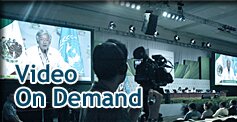







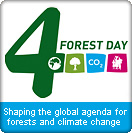
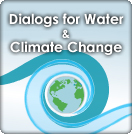


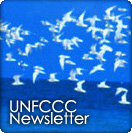
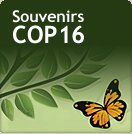





Social Media Links:
Follow us: